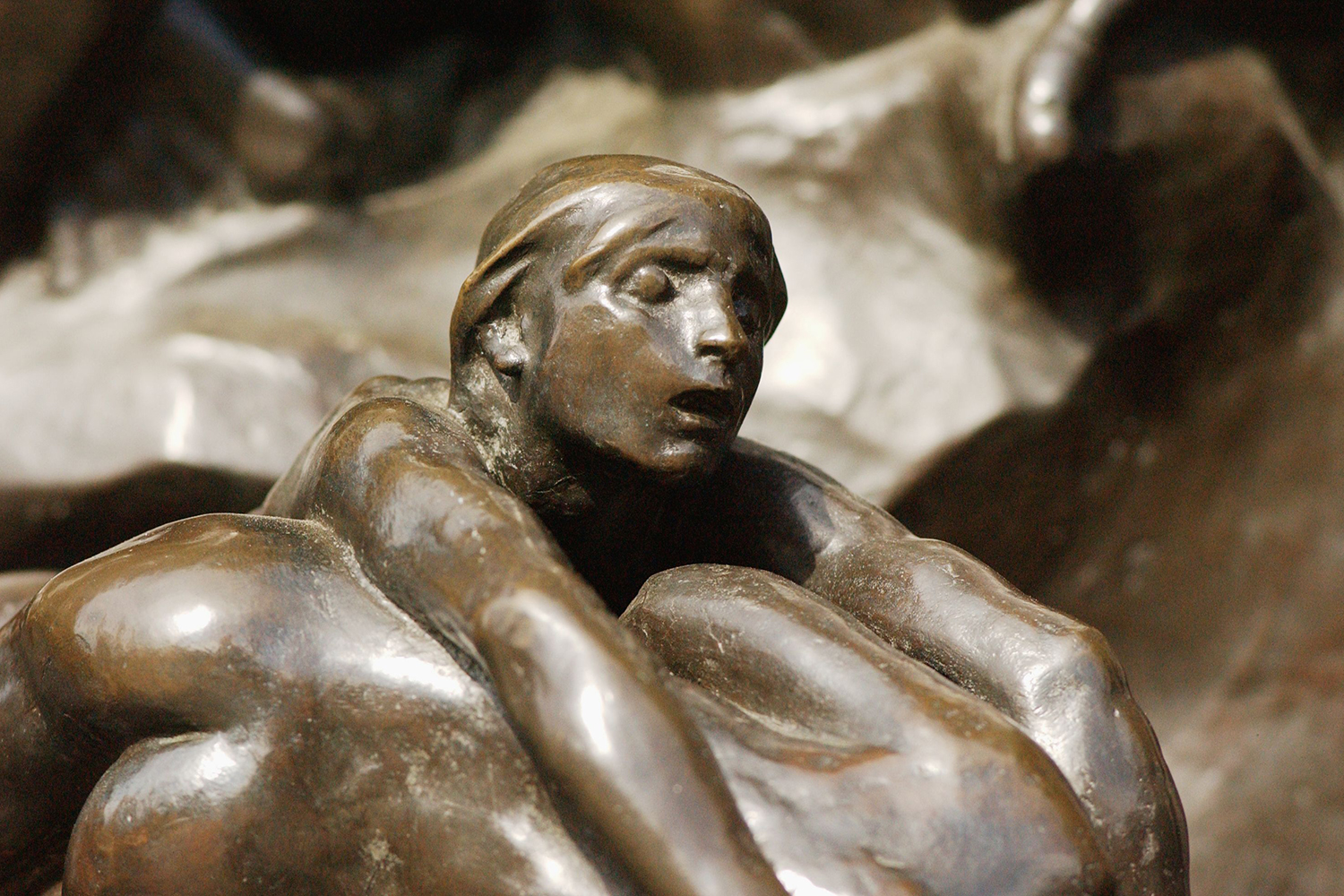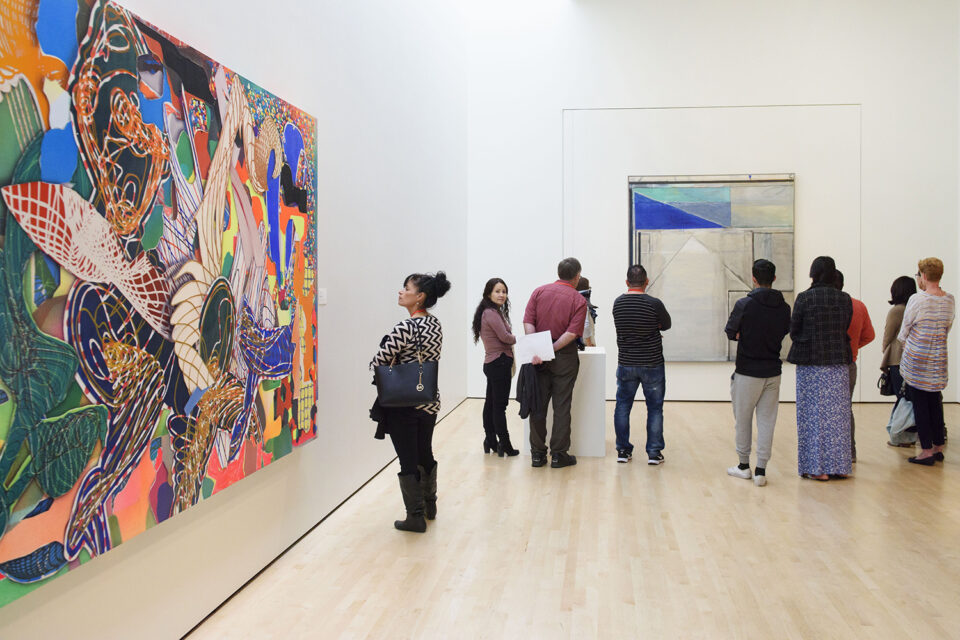How to appreciate art when you’re on vacation
If you’ve ever stood in a crowded museum gallery wondering if you were doing it right, these seven tips from Stanford experts will help.
You’re hitting up some world-class art museums this summer, maybe with kids or teenagers in tow. Whether you want to learn something, feel something, or just make it through the museum without anybody melting down, these tips will help you make the most of the experience.
Do (a little) research before you go
Some museums are like Everest. You go because they’re there. But if you go in without a plan, it’s easy to get overwhelmed. “It’s sensory overload, especially in the big museums – they’re enormous,” says Emanuele Lugli, assistant professor of art and art history. Once you know you want to visit a particular museum, Lugli says, do a quick search to get a sense of what you’re interested in, and pick a period, an artist, or a small group of works to focus on. That way, upon arrival you have some direction.
“When you’re dealing with encyclopedic museums, just having a little bit of an idea about what you want to see is going to make the experience more rewarding.”
Focus on quality, not quantity
Racing through a museum looking at as many works as possible is the way to exhaustion, not enlightenment. “A big mistake is to try to see everything, or almost everything, for a second or two,” says Alexander Nemerov, the Carl and Marilynn Thoma Provostial Professor in the Arts and Humanities. You’ll get more out of the experience by picking just a few works to look at, “for however long you feel engaged and stimulated,” Nemerov says, “keeping in mind that the work will give back to you in proportion to what you give to it.”
And don’t stay past the point that you can give the art your full attention. “With kids or teenagers especially, a key is to keep the visit short,” Nemerov says. “Thirty minutes is perfect for a small or free museum, and can produce a feeling of ‘wait, it’s all over already?’ Even for a big and costly museum, spending a max of one hour there – or one hour once you’ve found the first or maybe the only work you want to look at – is good and right and energizing.”
Look at the work before you read the card
Christina Linden, the director of academic and public programs at the Cantor Arts Center, uses an exercise many museum educators like to do with visitors before they read what a curator has written about a work. It’s three simple statements you can make in turns as a group, with kids, or silently to yourself: I see, I wonder, and I think.
“They’re about getting people to stop and think about observation, inquiry, and interpretation as separate exercises, and how they can start by just looking closely and thinking about what they’re seeing and what resonates for them,” she says. “And then moving on to look for more information if they’re interested in finding out what an expert might have said about the piece.”
Asking yourself what you’re looking at, how it’s being depicted, and the purpose of the work – is it a large piece that was made for a church or temple, or a small work meant to be a personal possession – is key to engaging with a work, Lugli says. “Do I like this?” is a valid question, too, he says, as long as you ask yourself why you like it or don’t like it. “That hopefully is going to lead to a different quality of discourse, one that allows you to understand something better about yourself, and about the nature of what you’re seeing.”
Trust your gut
“Most kids, and most adults, frankly, feel that when you’re in front of a painting, you need someone to tell you about it,” says Jeremy Sabol, the associate director of Stanford’s first-year Structured Liberal Education program. “That the primary experience isn’t you and your eyeballs and your heart, looking at a canvas, but some kind of lesson that you need from an expert, whether it’s a book or the internet. And that’s just not how paintings are supposed to work.”
Of course every cultural moment has visual cues, he says – you may be unaware that a certain color indicates wealth, for example. “But just by staring at a painting, if you spend 10 minutes in front of it, you start to have real feelings about it. An 8-year-old can have that experience. They don’t need their parents to explain it. They just need to find something that’s intriguing, and then really spend some time looking at it and trying to have a relationship with it.”
Says Linden, “Let yourself appreciate the work on your own terms, with the amount of time you have. Just look and feel and pay attention to your senses.”

Trying to see everything in a museum is likely to leave you feeling depleted. Instead, spend quality time with just a few works. (Image credit: L.A. Cicero)
Skip the masterpieces (or keep them to a minimum)
The room where Leonardo da Vinci’s Mona Lisa casts her enigmatic gaze is packed with people waiting in line to catch a glimpse of (and take a selfie with) the little glass-enclosed painting. It’s a fun place to people watch, Sabol says, but not a very good place to appreciate art.
“I’d have a hard time convincing someone who is going to Paris for the first time and is going to the Louvre not to see the Mona Lisa,” he says. “That just seems crazy. But I can pretty much guarantee it’s going to be a meaningless experience.”
Or, as Nemerov says, “It is best not to seek out famous works, the works you are ‘supposed’ to see. In matters of art, as in so many other things, obligation is the kiss of death.”
Put yourself in the painting
One way to make an art museum meaningful for kids, Sabol says, is to have them pick a person in a painting and pretend to be that person. “No matter what painting it is, you’re going to start having weird feelings, because the people in paintings are never there by accident.”
Sabol, who has led Stanford Travel/Study trips, including a family trip to Paris last summer, offers A Burial at Ornans by the French realist Gustave Courbet as a case in point.
“It’s an intimidating painting, kind of dark and hard to engage with. So one of the things that I try to get people to see about this painting is that not very many people at this funeral seem very sad,” he says. “They’re just kind of standing around. And then there’s that little dog in the front, and putting a little dog that’s not paying attention in the front of a painting about a funeral is kind of disrespectful. The dog seems like it’s looking at a fly or something. So, whatever this painting is about, it doesn’t seem like it’s about grief or loss.”
Taking the perspective of a figure in a painting is almost guaranteed to inspire questions, Sabol says. “Who are these people? Why would you paint this? Where is the person standing who’s painting it?” Suddenly that painting just got a lot more interesting.
Go big picture
Consider how an art museum is connected to its location, and then use that information when exploring the rest of the city. Questions like why a museum is in a particular location and whether it was designed as a museum or originally built for another purpose can tell you something about the place you’re visiting, Lugli says.
“Sometimes paintings depict areas of the city, or were taken from churches or buildings or institutions around the city,” Lugli says, which may inspire a side trip to a particular site or vista represented in an artwork. At that point, Lugli says, by trying to reconstruct the setting of a work, you’re doing the work of an art historian.
“Because we’ve studied for many years, we’re just quicker at drawing parallels. But we don’t ask any different questions.”
